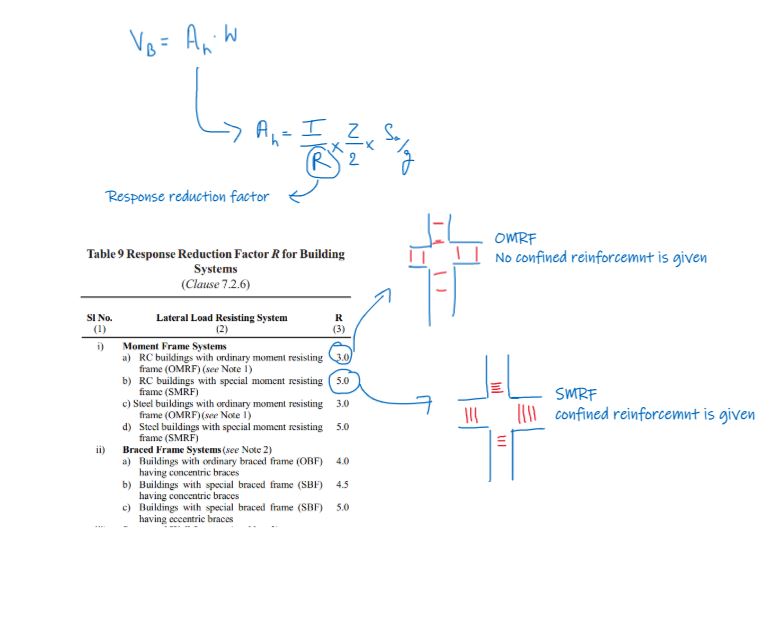The seismic base shear for a structure is reduced by response reduction factor – R depending upon the structural system.
Have you ever wondered why do we reduce the force by response reduction factor and what is the basis to get to the factor?
The concept lies in the term non-linearity, as for keeping the analysis simplified mostly linear elastic models are used.
[1] The linear elastic models are mostly accurate for gravity loads such dead load. Live load and other loads, but for seismic loads the forces are reduced by response reduction factor.
[2] Response reduction factor in a structure signifies the capability of the structure to dissipate the energy without leading to permanent failure.
[3] Further response reduction factor also denotes the over strength or redundancy that structure has for a given loading.
[4] Ductility of a structure which denotes the possibility of a structure to form non-linear plastic hinges in the structural members.
[5] Table 09 of IS 1893 – Part 01 (2016) (Criterion for earthquake resistant design of structure) given the values of R for different structural system.
So for example the R for a RC building with ordinary moment resisting frame is 3 whereas for a RC building with special moment resisting frame is 5.
Hence the engineer has the choice whether he/she wants to reduce the design seismic force by increasing the code ductility requirements or vice versa.
Any comments or suggestions are welcomed.

Comments are closed